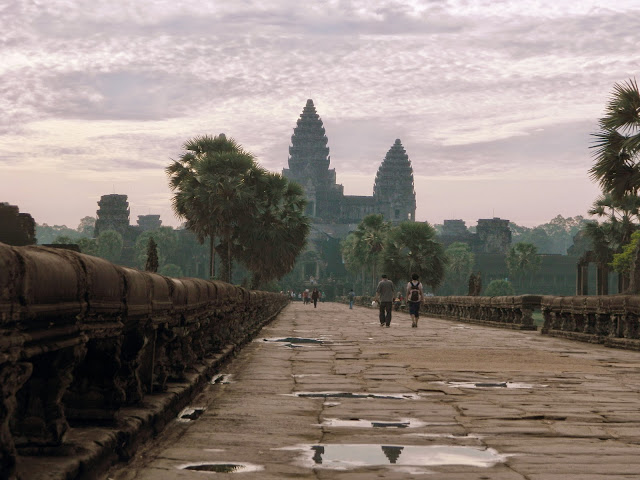 |
| Stationery Box in Kōdaiji style from Momoyama period (1573-1615). - Photo by: metmuseum.org |
Lacquareware is produced in several areas in Asian countries, especially China, Korea, Japan, Vietnam, Myanmar and maybe a few others. The origin of this art might start from China then spread into many other countries. Lacquerware has beautiful shiny finishes that resemble porcelain products that also originated from China.
The beautiful of lacquerware start from the beginning of the process that requires the layer of lacquer to be applied over and over again and the curing process that take several days to weeks. The total time to complete one product might take several months to years.
While in Japan the usage of lacquer (in Yayoi era) was so extensive from basket, farming tools, fishing gear, in many other materials - in order to protect these materials from damage easily. Then the usage of lacquer evolved as a craft during the Asuka period. The transformation was influenced by the Chinese arts that transferred to Japan. There were large amounts of lacquer were required during that period, that requires the amount of lacquer harvested to be controlled.
 |
| Old Chinese lacquerware from Ming dynasty, Wanli era (1573-1620). - Photo by: collections.lacma.org |
 |
| One of Maki-e motifs. - Photo by: Pqks758 |
 |
| Another antique stacking boxes with Maki-e. - Photo by: ancientpoint.com |
The advancement of the craft not limited to just painting and scraping, but also the usage of other materials such as ‘mother of pearls’, brass, copper, lead, silver, platinum and gold. Here in Japan the usage of the valuable metals is more popular and known as Maki-e (蒔絵, literally: sprinkled picture).
This technique was developed during the Heian period (794 – 1185) and became popular during the Edo period (1603–1868). This technique requires high skill, craftsmanship – that most of the young artists will go through many years to produce high quality arts with this technique.
There are many other techniques for Japanese lacquerware, but the Maki-e was considered one of the best technique mastered by Japan. Other than the technique, the motifs and the shapes of the materials that produced from Japanese craftsman also presenting the authenticate designs.
Even though we can still find the Japanese Maki-e lacquer products, the price can be expensive – most of it is antique products. The time intensive works to produce this art might be one of the reasons why not many artisan works on it.
Here I will include few videos related to Japanese Lacquerware works and arts in order to help you understand more on this topic.

































